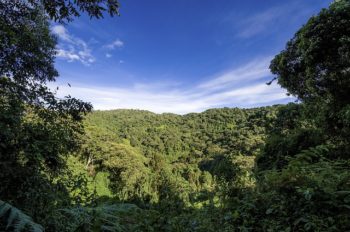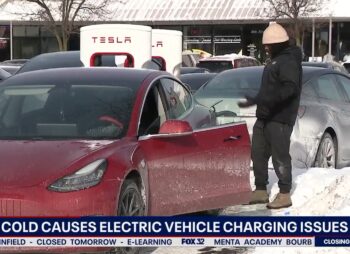
Is CO2 really destroying our planet?
CO2 is an odorless, invisible, trace gas in the atmosphere that acts as an important source of life for everything that lives on earth. In fact, plant and animal life on earth would be impossible without CO2.
CO2 is an integral part of the photosynthesis process. Plants synthesize CO2 and water to produce chemical energy that sustains the plant. Together with water and sunlight, CO2 acts as the elixir of life for the plant and animal kingdom.
Historical data suggest that increased CO2 concentrations have helped plant growth globally, enabling civilizations to increase their agricultural output drastically. Record food crop outputs in recent decades are due in significant part to increased atmospheric CO2 concentrations.
Production of major crops like wheat, rice, maize, and soybeans increases with increase in atmospheric CO2 concentrations.
After modern instrumental temperature records began, the past three decades were the warmest. Yet those were the same decades where plants registered their highest growth. Large-scale deforestation and occasional extreme weather events did not impede this record growth.
Zhu et al. captured the relative change of leaf area index from 1982 to 2009 due to CO2 fertilization and found that most parts of the world recorded an increase in plant canopy by as much as 14 percent, primarily due to increase in atmospheric CO2 concentration.
Li et al. found that net primary production — the productivity of individual or groups of plants, increased by 21 percent globally between 1962 and 2010. The increase in atmospheric CO2 concentrations was found to be the dominant factor for this extraordinary increase in plant growth.
How did CO2 — the elixir of life — turn out to be the evil gas of 21st century?
The special interest in CO2 began when a handful of scientists, backed by political elements, proposed their hypothesis — one which suggested that CO2 emission from anthropogenic sources, such as coal-fired plants, is the primary reason for what they allege is a dangerous increase in earth’s temperature.
Despite the lack of observational evidence, political institutions popularized this hypothesis through state-sponsored research programs.
In order to sustain their claims, these climate alarmists designed climate computer models to manufacture friendly results that supported their hypothesis. Through these computer models, the alarmists suggested that the earth was at a point of no return.
They insisted that unless the current CO2 emission rates are reduced, global temperature levels will rise drastically, causing a collapse of major life-sustaining systems.
To further consolidate their results, alarmists engaged in a deliberate manipulation of global climate datasets — a scientific scandal that was popularly known as Climategate.
In 2009 and 2011, leaked emails from the servers of leading climate research universities exposed how top climate scientists altered global temperature datasets to project a significant warming rate, in order to sustain their alarmist claims.
Other climate scientists challenged the alarmists, but their agenda only gained momentum.
The alarmist claims eventually found global acceptance by political lobbyists and were formally institutionalized through a global agreement to reduce CO2 emissions — the Paris Agreement.
However, soon after the formal initiation of the Paris Agreement, a series of new research findings proved the alarmist hypothesis wrong. The findings exposed how the computer climate models exaggerated the warming, by overemphasizing the role of CO2 in increasing the temperature levels.
The scientists within the alarmist camp had no option but to acknowledge the grand failure of climate models — a flaw that was pointed out by other climate scientists for nearly a decade.
There has been a 40 percent increase in atmospheric CO2 concentration since the beginning of the Industrial Revolution. This has resulted in the greening of the Earth, with plants recording high growth rates due to the CO2 levels.
World food production must increase by more than 70 percent from today’s levels, to meet global food demand in the year 2050. Without the benefits of CO2, world food supply will fall short unless huge new tracts of land are converted from wilderness habit to farmland.
The world has seen record crop outputs in the past two decades. If anything, the carbon dioxide concentration in the atmosphere has helped life on earth.
It is time for the global mainstream media to stop calling CO2 a curse and start calling it a blessing. It is time to acknowledge the immense benefits that humans have enjoyed due to CO2.
The pseudo-scientific climate scare propaganda must be stopped from causing more damage to the future of billions who live in poverty.
Read more at American Thinker

















In case you were not caught up on your Enviromentalists Wackos history Rakooi the Earth was suppost to be a dead rock in space orbitung 93 million miles from its sun and 3rd planet away from its sun and the arctic Icecap was suppost to be gone by now if you realy listened to Al Bores mindless babbling as well as his idiotic poem
With fellows like Rakooi and Spurwing Plover riding shotgun on this site, why would any intelligent and informed reader spend time that’s guaranteed to be wasted? Numbers of commenters tell the tale..
We are as effective against climate change as the Paris Accord. And, yes, we’re wasting our time, too.
We need to harness all the Hot air so Al Bore and Leonardo DiCaprio and those annoying wackos from Greenpeace can be of good use
The following comment by Rakooi contains a blatant lie. He deliberately equates asphyxiation to poisoning, in this case from accidental release of commercial CO2 into a confined space. He knows the difference but tells us that CO2 is toxic. Asphyxiation is death from lack of oxygen.
On the slim chance Rakooi believes that CO2 is poisonous, then he is too stupid to be taken seriously.